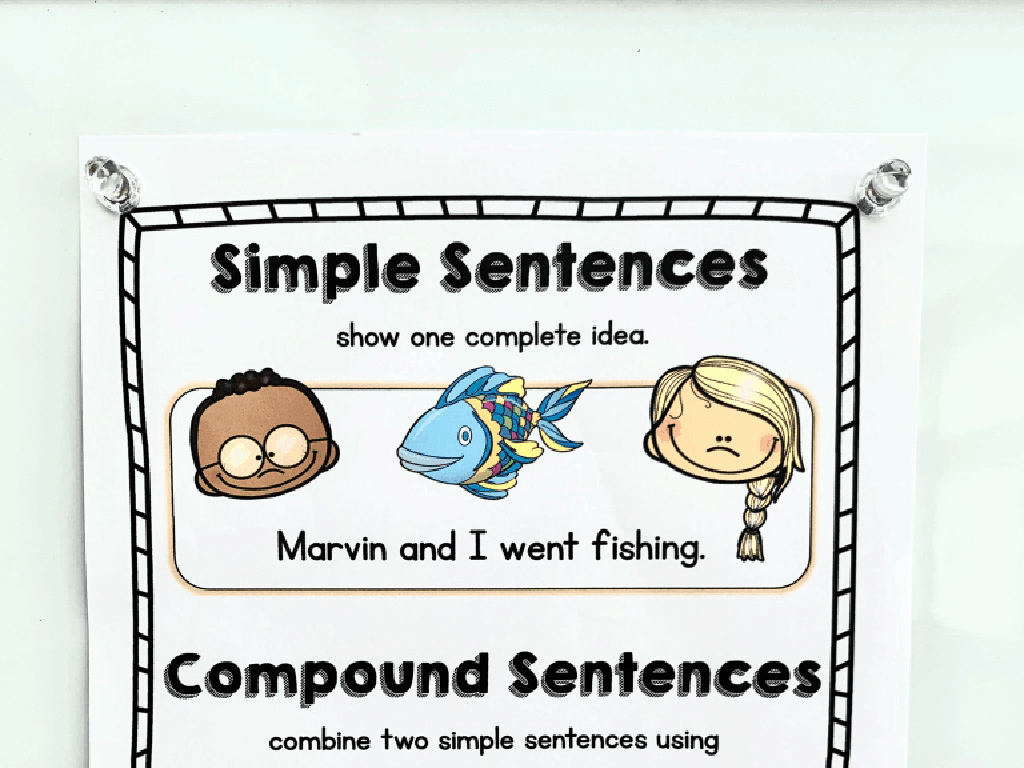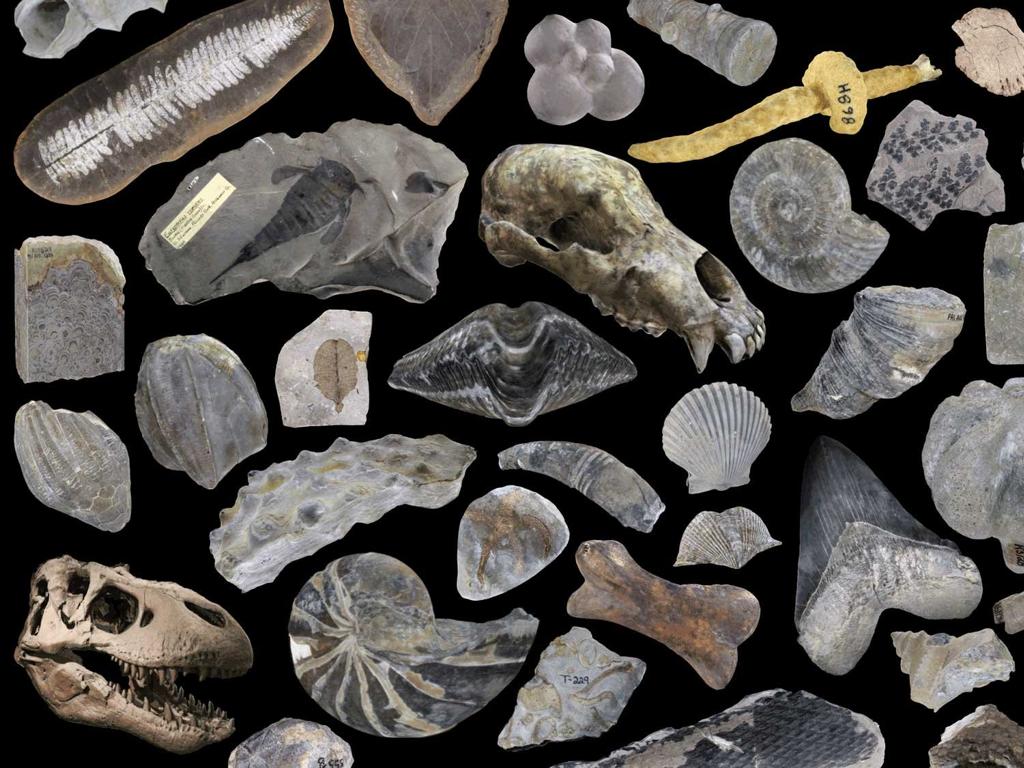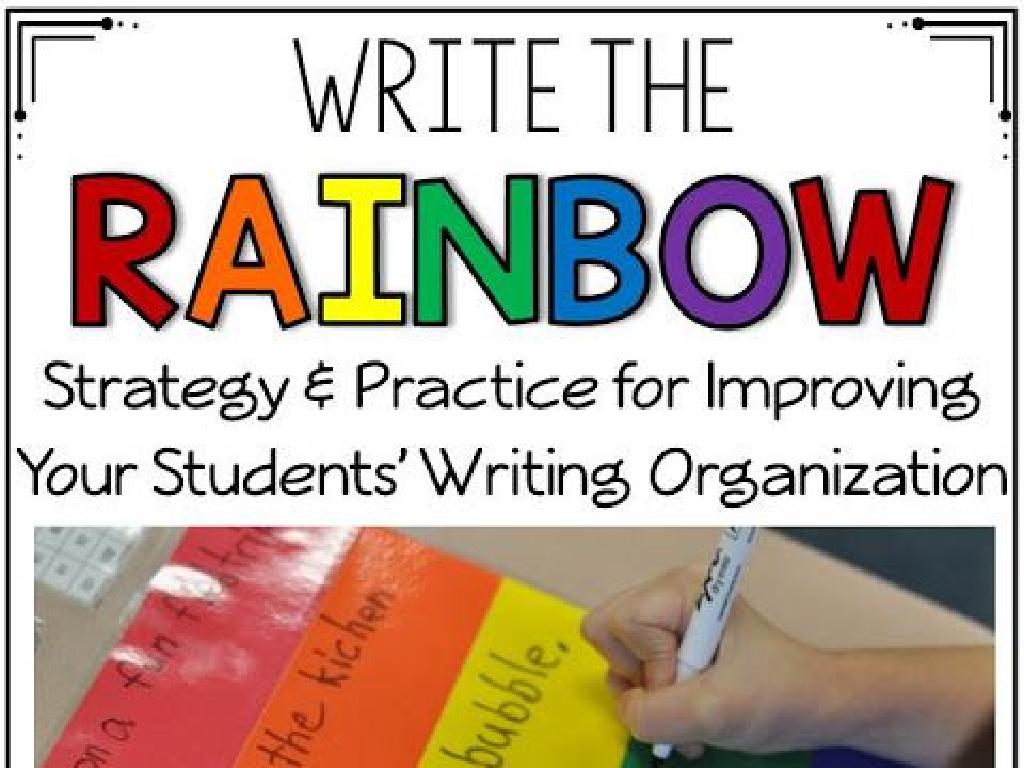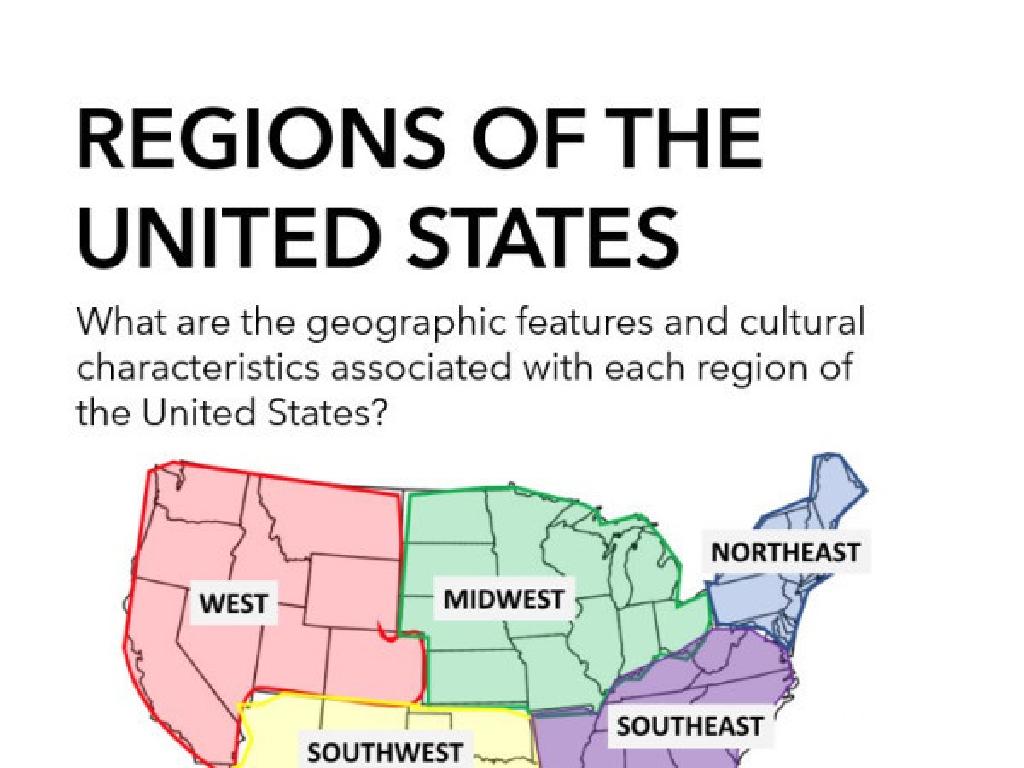Identify Plants And Animals
Subject: Science
Grade: Third grade
Topic: Classification
Please LOG IN to download the presentation. Access is available to registered users only.
View More Content
Welcome to Classification!
– Learn to identify plants & animals
– We’ll explore different species and what makes them unique
– Grouping living things
– Organisms can be sorted based on similarities & differences
– Why classification matters
– Helps us understand biodiversity and ecosystem roles
|
This slide introduces the concept of classification in the natural world, which is a system used by scientists to organize and understand the vast diversity of life on Earth. By learning to identify and group plants and animals, students will begin to recognize patterns in nature and understand the relationships between different organisms. Discuss the importance of classification in understanding how different species interact within ecosystems, their specific roles, and the importance of biodiversity. Encourage students to think about how they naturally classify objects in their daily lives and how this skill can be applied to the natural world.
Exploring Classification in Nature
– What is classification?
– Sorting things into groups based on similarities
– Why classify living things?
– Helps scientists study and understand biodiversity
– Classification in everyday life
– Like sorting clothes or organizing toys
– Engage with examples
– Can you group your snacks by color or shape?
|
This slide introduces the concept of classification to third-grade students. Begin by explaining that classification is like sorting things into different groups based on what they have in common. Emphasize that scientists use classification to organize living things, making it easier to study and understand the vast diversity of life. Draw parallels to everyday life by asking students to think about how they sort their clothes, organize their toys, or even group their snacks. Encourage them to come up with their own examples of classification. This will help them grasp the concept and see its relevance in their daily lives. In the next class, we can discuss their examples and explore how scientists classify plants and animals.
Characteristics of Plants
– Plants are living organisms
– They grow, breathe, reproduce, and need food
– Plants have different parts
– Roots absorb water, stems support, leaves make food, flowers reproduce
– Common plants we know
– Examples: Grass, trees, flowers, and bushes
– Plants make their own food
– Through photosynthesis using sunlight, water, and air
|
This slide introduces students to the basic characteristics of plants. Emphasize that plants are living things, which means they have life processes such as growth and reproduction. Discuss the various parts of plants and their functions: roots for absorbing water and nutrients, stems for support, leaves for photosynthesis, and flowers for reproduction. Encourage students to think of and list common plants they encounter in their daily lives, such as the grass on their lawn, trees in the park, or flowers in their garden. Explain the process of photosynthesis in simple terms, highlighting that plants can make their own food using sunlight, which is unique to them. This understanding lays the foundation for further exploration of plant biology and the role of plants in ecosystems.
Characteristics of Animals
– Animals are living things
– They need food for energy
– Like us, animals eat plants or other animals
– Animals can move and sense
– They use legs, fins, or wings to move
– Let’s name different animals!
– Can you think of animals in your home or garden?
|
This slide introduces the basic characteristics that define animals. Emphasize that animals are a diverse group of living organisms that require food for energy, which they get by eating plants or other animals. Highlight their ability to move in various ways, such as walking, swimming, or flying, and their senses that help them interact with their environment. Encourage the students to think of animals they are familiar with and how these characteristics apply. This will help them understand the concept of classification based on common traits. In the next class, ask the students to share the names of different animals they thought of and discuss their habitats and behaviors.
Similarities and Differences Between Plants and Animals
– Both plants and animals are living
– Plants and animals have different needs
– Plants need sunlight, water, and air; animals need food, water, and air
– Characteristics of plants vs. animals
– Plants usually don’t move, make their own food; animals move, eat plants or other animals
– Fill in a Venn diagram as a class
|
This slide aims to help students understand the basic similarities and differences between plants and animals, which is a fundamental concept in biology and classification. Start by discussing how both plants and animals are living things, which means they grow, reproduce, and need energy to survive. Then, delve into their different needs: plants require sunlight to make food through photosynthesis, while animals need to consume food. Highlight key characteristics, such as mobility and methods of obtaining energy. Use a Venn diagram to visually represent these concepts, which will be filled in together during class. This interactive activity will engage students and solidify their understanding of the topic. Provide examples of each and encourage students to think of their own examples to contribute to the diagram.
Grouping Plants and Animals
– Group by characteristics
– Examples: mammals, reptiles
– Warm-blooded, furry animals like cats and dogs
– Trees and flowers as groups
– Plants with trunks are trees, colorful parts are flowers
– Let’s group some examples!
– We’ll practice sorting different plants and animals
|
This slide introduces the concept of classification to the students, emphasizing the importance of grouping living things based on shared characteristics. Start by explaining that characteristics are special features or qualities that something has. For animals, discuss the characteristics that define mammals (e.g., having fur, being warm-blooded) and reptiles (e.g., cold-blooded, scaly skin). For plants, differentiate between trees (e.g., large, with a trunk) and flowers (e.g., often colorful, with petals). Engage the students in an interactive activity where they group provided examples of plants and animals into the correct categories. This will help them understand the concept of classification and how it is used in science to organize living things.
Activity Time: Classifying Our Classroom
– Be a scientist in our class
– Find and classify classroom items
– Decide if each item is from a plant or an animal
– Work in pairs for your list
– Present your findings to the class
– Share what you classified and why
|
This activity is designed to engage students in hands-on learning by exploring their immediate environment to identify items that originate from plants or animals. Encourage them to think broadly, considering all items in the classroom, such as wooden pencils (plant) or wool sweaters (animal). Working in pairs fosters collaboration and communication skills. As they prepare to present, guide them to articulate their reasoning for each classification, reinforcing their understanding of the characteristics that distinguish plants from animals. Provide support as needed and ensure each pair has a chance to share their findings with the class.
The Importance of Classification
– Congratulations on learning classification!
– Understanding why classification matters
– It helps scientists organize and study living things.
– Classification aids in environmental protection
– Knowing groups helps us conserve habitats and species.
– Keep exploring the diversity of life!
|
Well done to the class for mastering the basics of classification! It’s crucial to recognize the significance of this skill in the broader context of science and environmental stewardship. Classification allows us to systematically organize the vast diversity of life, making it easier to study and understand the relationships between different organisms. It also plays a key role in conservation efforts, as identifying and classifying species is the first step in protecting them and their habitats. Encourage the students to continue exploring the natural world around them, observing plants and animals, and considering how they fit into the classification system they’ve learned.






